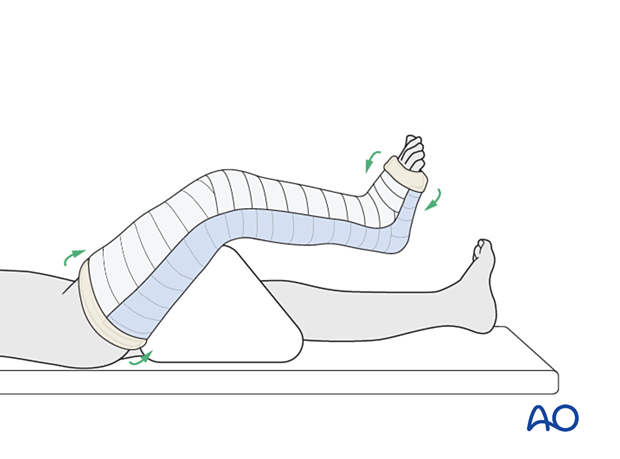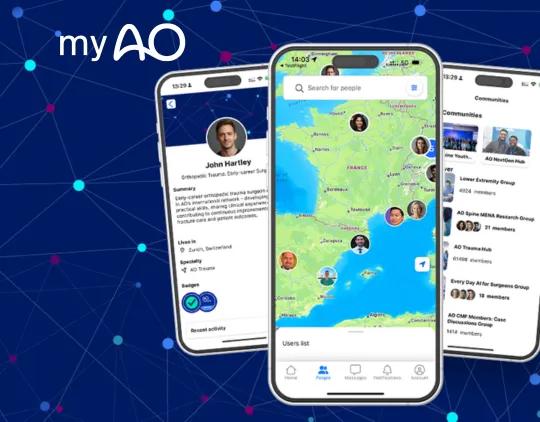Splinting
1. General considerations
Introduction
A long leg splint with the knee flexed may be applied for comfort in the early postoperative period.
Prefabricated splints are often incorrectly sized, particularly in smaller children, and a back slab cast may be more comfortable.
With the knee flexed, apply padding around the leg and slabs of casting material posteriorly, covering half of the circumference.
Secure the splint with a bandage.
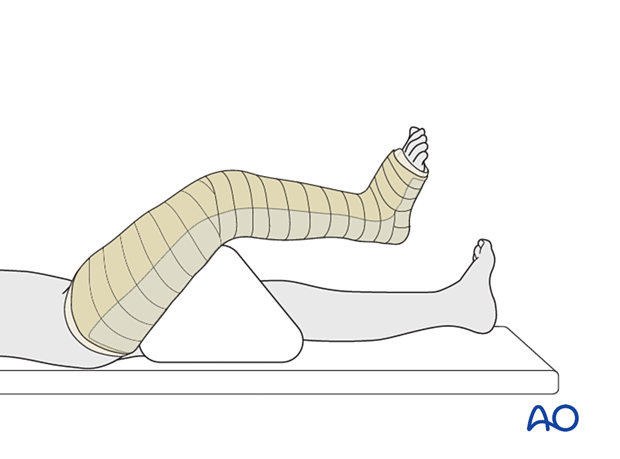
Complications
- Pressure sores
- Skin irritation
- Thermal burns (avoid using hot water)
2. Preparation
Material
- Tubular bandage (stockinette) of appropriate size
- Cast padding
- Felt
- Casting material: synthetic, plaster of Paris, or a combination of both
- Water
The water temperature should ideally be between 22° and 25° C.
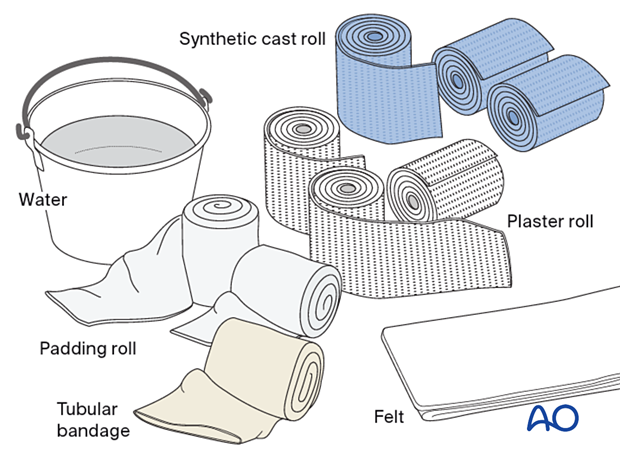
3. Splinting
Dressing
An assistant supports the leg with knee flexion.
The distal edge of the splint extends to the base of the toes. The proximal edge lies just below the groin.
Apply a tubular bandage and cut it slightly longer than the length of the final cast.
The assistant holds the toes, not the stockinette, with the ankle in a neutral position.
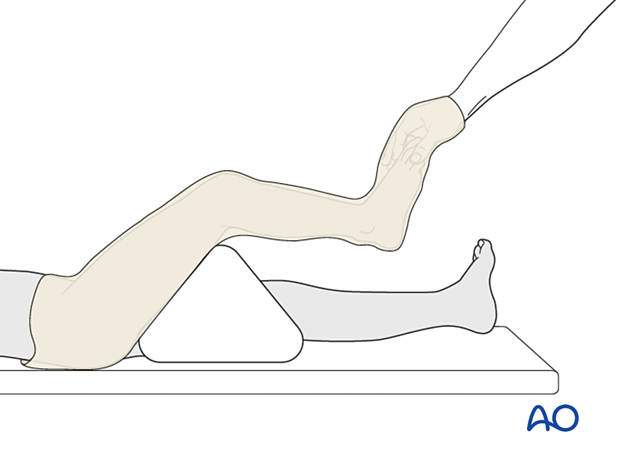
Padding
Add thick felt or additional padding at the free edges of the splint and prominent areas (eg, fibular head, patella, tibial crest, malleoli, and heel) to prevent pressure sores.
Apply cast padding without creases, overlapping each layer by 50%.
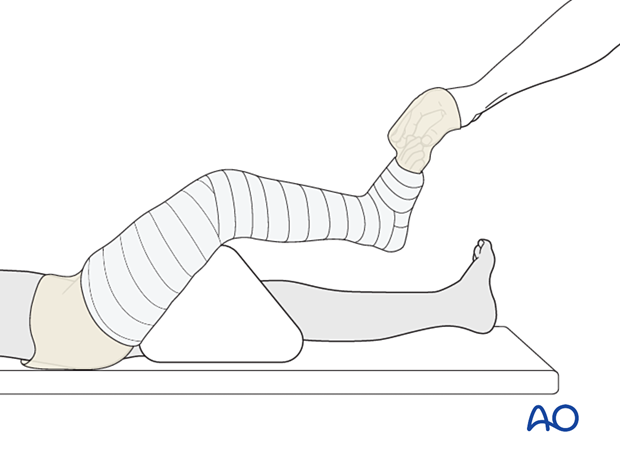
Application of the back slab
The assistant holds the ankle in a neutral position.
Apply a slab of 3–6 layers of cast material.
Avoid sharp edges at the ends of the cast.
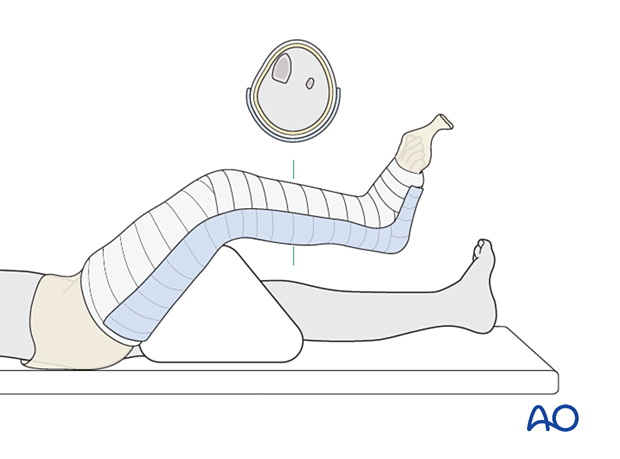
Fold the tubular bandage and padding over the edges of the cast before applying the bandage.
Ensure that all toes are visible for vascular assessment.
Confirm normal toe color and capillary refill at the end of cast application.
